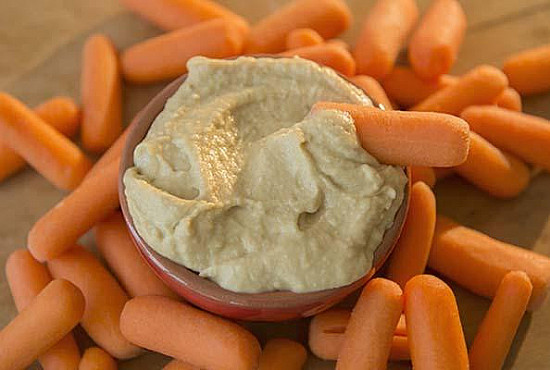[ad_1]

Whether you want to manage your weight or simply look for healthier choices, eating low-calorie, nutrient-dense snacks can keep your energy stable and help you avoid cravings for unhealthy foods. We’ll explore smart snack ideas that support a healthy, balanced diet and help you stay on track without sacrificing flavor.
The role of snacks in a balanced diet
For many of us, snacking is part of everyday life. A survey found that 75% of Americans snack daily, and many replace meals like breakfast or lunch with a snack.
Snacking itself is not necessarily a problem. The problem arises when your snacks are too filling or you snack too often, especially if your favorite snacks are unhealthy foods that offer little nutritional value – think chips, cookies and other processed foods high in sugar, salt, refined grains and unhealthy foods. fats. When we choose these foods, we miss the opportunity to give our body the whole, nutrient-dense foods it needs.
How snacks can prevent overeating
When we choose reasonable amounts of appropriate foods, snacking can avoid the energy dips our bodies can experience if we go several hours between meals. Snacking can also help control appetite by preventing unhealthy cravings. And done right, snacks can provide our bodies with extra nutrients, especially when we choose snacks like fresh fruit or nuts.
Because excessive snacking can lead to weight gain, it’s important to control your portions and choose snacks that are low in calories and high in nutrients. For example, opt for fresh, whole foods like fruits and vegetables that provide essential vitamins, minerals, fiber and antioxidants. Obtain small amounts of high protein snacks like nuts, cheese, and beans, which can make your snacks more satisfying and keep you full longer. And opt for whole-grain bread or cracker versions.
You can try some smart snacking strategies like dividing your snacks in advance and making the effort to eat mindfully, savoring the flavors, colors and textures of your snack.
Tips for Making Healthy Snacks
The healthiest, most filling snacks contain a combination of protein, fats and carbohydrates. It doesn’t have to be complicated. For example, a handful of whole grain crackers (carbohydrates) with low-fat cheese (protein, fat) and a small amount of dried fruit (carbohydrates) provide all three macronutrients.
With a little planning and the right ingredients, you can create quick, nutritious options that will keep you energized throughout the day. These simple tips can help you prepare snacks that are satisfying and good for your body.
Preparation healthy options like fruits and vegetables by keeping them washed and ready. You can store your prepared products in containers in the refrigerator to make your snack choice easier.
To prioritize minimally processed whole foods.
Plan ahead So when hunger strikes, you’re ready to eat something healthy.
Experience with different food groups. Try combinations like yogurt with berries, carrots with hummus, or bananas with peanut butter. These combos are balanced and satisfying snacks.
Keep temptations out of sight by storing unhealthy snacks in harder-to-reach areas of your kitchen. Or commit to not keeping unhealthy snacks in your house so they don’t tempt you. Make sure healthier options, like fruits and vegetables, are easily accessible.
Stay hydrated throughout the day. Drink water or unsweetened tea rather than sugary drinks.
15 Healthy, Low-Calorie Snack Ideas
Here are some suggestions for healthy, low-calorie snacks. Each provides approximately 150 to 200 calories.
- One banana, sliced and spread with 1 tablespoon peanut butter
- One medium apple or pear with 12 almonds
- 1 cup grapes or cherry tomatoes with string cheese
- 1 cup raw carrots, broccoli florets, cherry tomatoes or peppers with 2 tablespoons black bean dip or 1/4 cup hummus
- 1/2 cup edamame (soy in the pod)
- 1 cup tomato soup with five whole grain crackers
- 6 ounces plain Greek yogurt with 1/2 cup fresh or frozen berries and a sprinkle of granola
- 1/4 cup trail mix containing dried fruit, dark chocolate and nuts
- A small slice of whole grain flatbread with 1 tablespoon of almond butter and 1 teaspoon of fruit spread
- 1/3 cup oatmeal cooked in 1 cup cinnamon milk
- 3 cups air-popped popcorn with 2 tablespoons grated Parmesan
- A hard-boiled egg and 12 almonds
- Fruit smoothie blended with 1 cup milk, half a small banana and 1/2 cup berries
- Five whole-wheat crackers and 1 ounce of cheddar cheese
- Half of a small whole wheat tortilla with two slices of turkey, tomato and a few slices of avocado
Since calorie counts can vary from product to product, it’s always a good idea to check the Nutrition Facts Label and adjust your portion size accordingly.
[ad_2]
Source link
